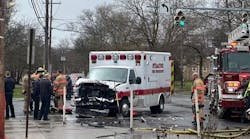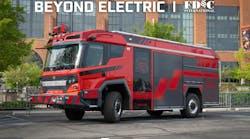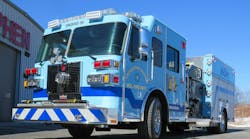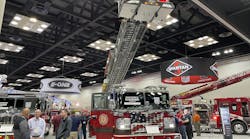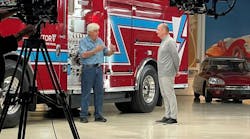SAN DIEGO -- Many fire trucks have crashed, or will crash this week at Firehouse World – but they are all simulated.
Representatives from Simulation Technology, a driver training simulation company based in Elburn, Ill., taught a class in Firehouse World's "Hot Box," a new feature at the conference where classes are held on the show floor.
Coverage of Firehouse World 2011
The class, called "Integrating Effective Driver Training Simulation into Your Driving Program,” was a hands-on workshop where participants were given demonstrations on a computer-operated simulator with animated scenarios of apparatus responses.
It was taught by Darren Basch, sales and marketing/business development representative for Simulation Technology, and Jason D'Eliso, a captain with the Scottsdale, Ariz., Fire department and a certified driver instructor and simulator instructor who also works for the Scottsdale Community College.
The class was limited to 20 students, and all who participated were given time behind the wheel of the simulator, which is a replica of a Spartan Metro Star cab and chassis, complete with a power-electric seat, seat belt and all the emergency warning systems and radios, as well as a fire pump engagement system.
"We want this to be as real as possible," Basch said. "It uses the same technology as a real truck."
The difference is, of course, the animation on the several LED screens that make up the windshield and side door windows.
A single computer provides the brain power for the entire simulator and the interaction with the driver. Sirens, engine noises and even vibrations in the steering wheel make for a realistic training scenario.
Basch said the system allows operators to get a feel for how to recover from driving an apparatus off the edge of a shoulder and make a successful recovery, and how a skid feels on icy, snow covered roads.
As one student purposefully dropped the right side wheels off a rural road, Basch and D'Eliso provided tips on how much throttle and how much the wheel needed to be turned to recover. Some recovered successfully; others didn't, resulting in a crash. But no one was hurt and there was no damage, except to the egos of those who wrecked.
"Nobody is going to let you do these kinds of things with a real truck," Basch said.
The two instructors also gave pointers on what training officers might look for when they seek to purchase simulators for their departments. One of the most important aspects of the simulator for Basch is that the same dash board and user interface items, like switches and warning light systems and sirens be the same as found in a real apparatus.
"We didn't want anyone to say 'It's sort of like a truck,'" Basch said. "We want the same part, the same steering wheel, the same pedals, the same everything."
Even with the very real truck parts being used, Basch said there is a learning curve that simulator users have to get used to.
"You don't realize how many G-forces you have on your body when you are accelerating and braking and you have none of those here," Basch said, noting that only places like NASA can afford that kind of technology and equipment in simulators.
Grant money is often available for driver training and can be used for simulators, the instructors said. D'Eliso said most grants will require a business plan of some kind to make sure the money is used wisely.
Simulators have been used in training scenarios for nearly 100 years, with the military having simulated horses to train recruits on how to use saddles and reins, Basch said. The military has also used flight simulators to train over 500,000 pilots over the years.
Basch said there is a stigma that simulators are like games and some dismiss them as nothing more.
"Being called a game is not a bad thing," Basch said. "When you think of the young recruits, the young bucks coming up, they're all gamers, they're used this kind of technology. They've got terrific hand-eye coordination. "
A total of three simulators are on the show floor at Firehouse World, two geared to fire apparatus and one to a police cruiser, based on a 2011 Dodge Charger. One is being operated in the Spartan Motors booth and is available for demonstration during show hours.
"It's a great way to learn how to drive without causing any damage or any injuries," Basch said. "And everyone goes home."
